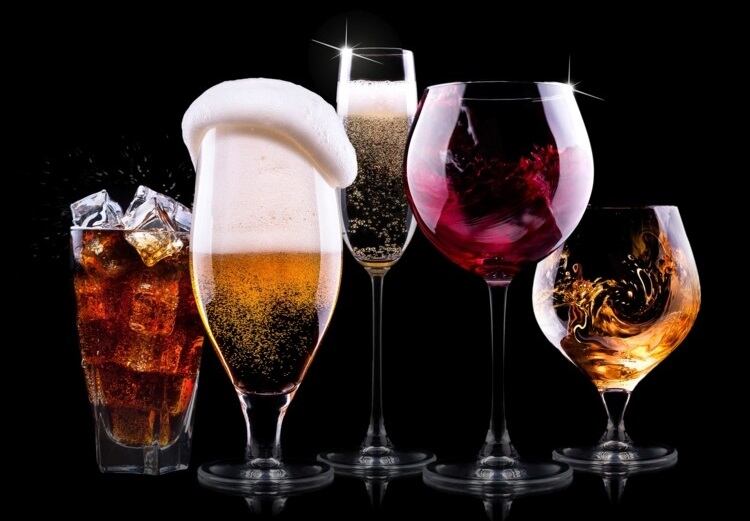Any dieter will tell you that alcohol is ‘liquid sugar’, with little nutritional value and it is very easy to under estimate the calorie value in a beer, wine or spirit. The current ‘war on sugar’ and general interest in healthier eating, means this is changing as consumers are increasingly keen to know the nutritional and calorific value of all the food and beverages they consume.
Of course, there are rules about what alcohol can and cannot show, which should be integral to the product and not part of any packaging that will be thrown away. Reference to the Portman Group or the Drinkaware campaign (UK) needs to be made and brands should ensure that the alcohol does not promote or glamorise sexual or illegal behaviour or excess drinking.
However, the labelling of ingredients and nutritional information on alcoholic beverages containing more than 1.2% by volume of alcohol is voluntary in the United Kingdom, European Union and most world markets. At present there is no overriding EU regulation governing labelling across the EU in all sectors of alcoholic beverages, with individual countries making their own decisions.
The European Commission published a report in spring 2017 calling on the alcoholic drinks industry to develop a voluntary code of practice to communicate the ingredients and nutrition information to consumers, either on label or on-line. The beverage industry has until 2021 to report on progress.
Current food labelling requires the following to be expressed on-pack, but this is not required for alcohol, although this is being reviewed ready for the industry to report back:
- Energy, expressed in both kilojoules and kilocalories
- Fats, in grams
- Of which saturates, in grams
- Carbohydrates, in grams
- Of which sugars, in grams
- Protein, in grams
- Salt, in grams
The beverage industry has already made noises about such information being made available to consumers on line via QR codes or web-links for example (this is interesting if accepted as it opens the principle to the labelling of food in general). The belief is that the beer and cider industries will move to make this available but that the wine industry is less willing. The Euro Consumer group was not in favour of this as they felt it was too soon for a web-based solution as not everyone has access to the internet and that nutritional information should be compulsorily on-pack, as with soft drinks.
Many supermarkets already voluntarily indicate nutrition and ingredients by using visual cues such as the pregnant woman symbol and warnings regarding units of alcohol consumption.
There are further issues around using 100ml as a unit of showing nutritional value. While 100ml needs to be shown as a means of comparison, spirits, for example are not consumed in 100ml so there needs to be an indication of nutritional value per measure or shot. This then has an impact on all the nutrition information that can physically fit on the printed label.
There are also practical considerations regarding the on-trade sector too – how will bars and restaurants communicate the nutritional value of alcohol to their customers or indeed should they?
Markets outside the European Union have different rules on nutrition labelling for alcoholic beverages and there are some new developments in progress.
In the spotlight: regulations in three EU markets
Germany
Real German beer only includes four ingredients, but Germany also requires ingredients declaration to be made on-pack. According to a mutual recognition clause, any fermented beverage manufactured outside Germany may be marketed under the designation 'beer' in Germany, provided they are lawfully marketed under the name ‘beer’ in the country of manufacture. At least the consumer can see from the ingredients list whether it is the beer is genuine German beer or imported.
France
In France there is a desire to increase visibility of the French mandatory pregnant lady logo. A new enlarged with more contrast logo is in preparation and expected for next year.
French authority guidance on beer labelling (from July 2017) requires the same minimum mandatory labelling as EU FIC Regulation with an ingredients list declaration strongly encouraged.
Spain
For beer and other alcoholic drinks above 1.2% by vol. of alcohol, an ingredients list is not legally required however, it is not unusual to find an ingredients list (and even nutrition information) on most beer labels on the Spanish market.
Alcohol free beer (alc.<1%) and other beverages mixed with beer, as defined in national legislation are not exempted, if alc.<1.2%. The Spanish compositional standards on beer was updated in 2016 to include definition of these types of beers due to the growing popularity of the Spanish market.

As per the opinion of some regulatory experts in Spain, beer manufacturers are more open to provide labelling information on ingredients and nutrition, not only for consumer interest, but due to the lower calorie profile of beer compared to other alcoholic beverages and a possibility to declare mineral and vitamin contents.
Clearly EU countries are already doing their own thing on a voluntary basis and it is therefore only a matter of time before nutritional labelling on-pack becomes law.
About the author: Pete Martin is Regulatory Affairs Director at Ashbury Labelling and has been with Ashbury since June 2015, helping to develop the company’s service throughout the UK and globally.
Starting his career as a Trading Standards Officer in Coventry in 1988, Pete worked independently for many years providing trading law support to food industry clients and has particular expertise food law.

